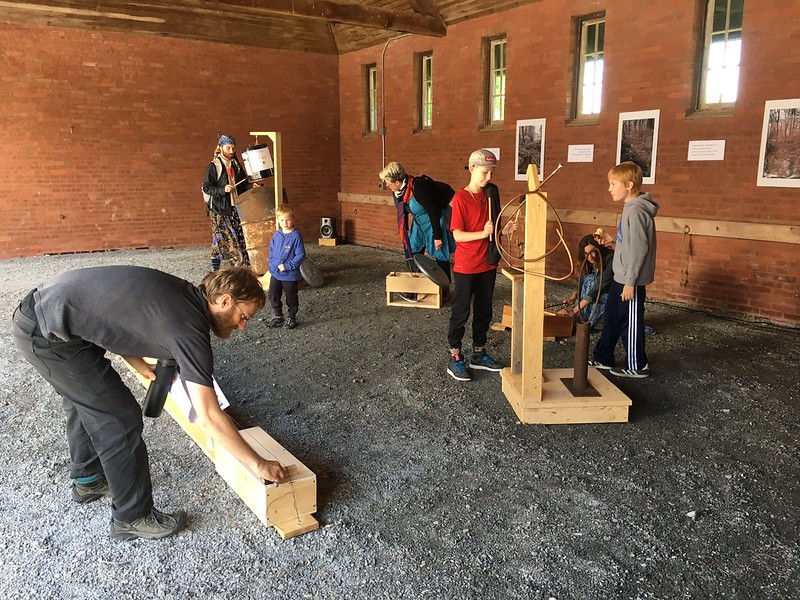About
Dispossession and Disposal:
Each scrap pile settles,
inscribing colonial history (and
futurity) into the sediment itself.
I watch the slow death of metal,
in the creek bed,
its resonance eaten by rust.
The half-buried pile of rusted scrap etches a boundary line into the earth. It marks a border between the taskscape of the yard or field and the terra nullius of the woods, the land in use and the empty space. The rural, especially in the Northeast, is an intersecting network of these lines, archived in topsoil, stone walls, and long-forgotten barbed wire.
For this installation, I excavated metal from the streambed where I live in Woodbury, Vermont. With this metal and wood from a local sawmill, I built a collection of instruments, and composed a 24-minute soundscape combining sounds from these objects with field recordings from the site where they were found. The instruments were arranged as a participatory sound installation accompanied with the stereo soundscape and large format photos of the creek bed and scrap pile. As participants, ranging from young children to professional instrumentalists, played along with the soundscape, I moved through the space engaging observers in discussions about the rural idyll and old dump sites.
The work was installed at Sounds of the Earth, a one-day music festival in Shelburne, Vermont, produced by New Music on the Point in collaboration with Scrag Mountain Music and TURN Music. Almost one year later, the instruments were burned in a prayer ceremony in solidarity with Mashpee Wampanoag tribe, who asked allies to light fires in support of their sovereign claim to their reservation lands.
